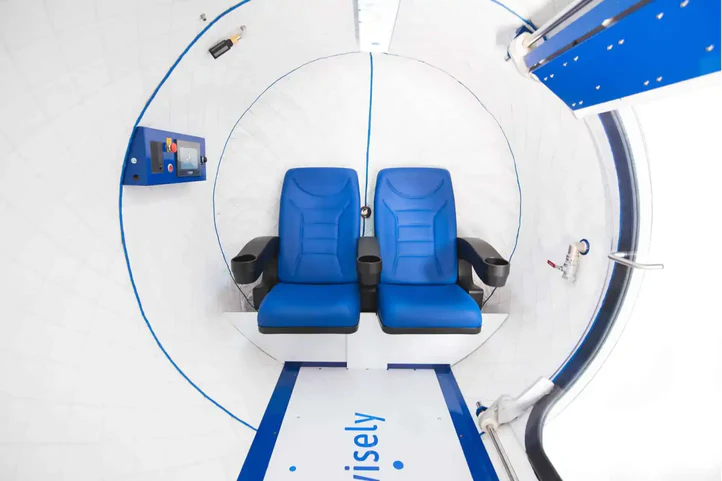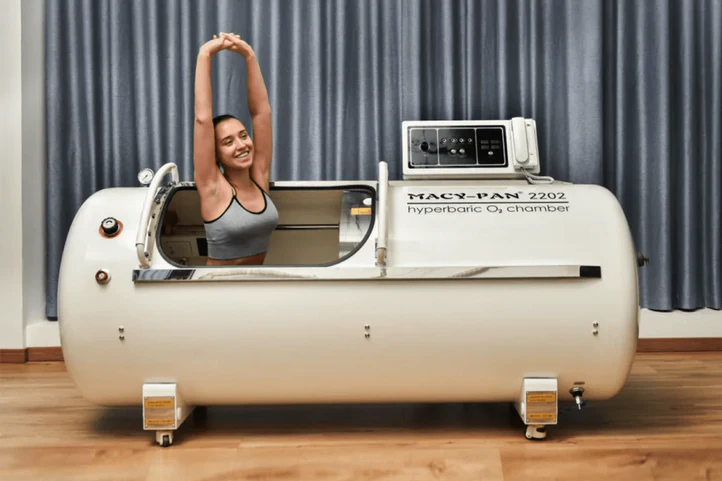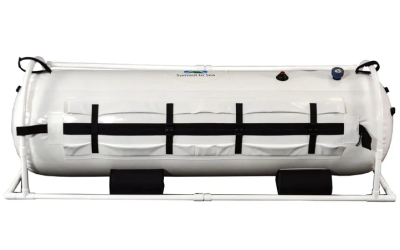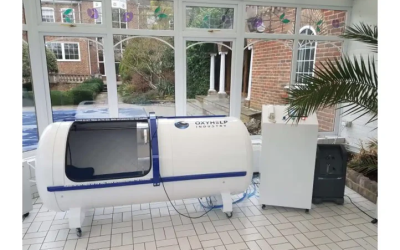Hyperbaric chambers are designed to last many years with proper care and maintenance. However, the lifespan of a hyperbaric chamber can vary depending on the brand, model, and usage. Most chambers can last 10 to 20 years on average before needing significant repairs or replacements.
Regular maintenance is key to prolonging the life of a hyperbaric chamber. This includes regularly inspecting the chamber for wear or damage, cleaning and sanitizing the interior after each use, and ensuring all components function properly. Following the manufacturer’s maintenance and service intervals guidelines is also important.
Brief overview of hyperbaric chambers and their use in medical treatment
Hyperbaric chambers are sealed, pressurized chambers that allow patients to breathe in pure oxygen at higher-than-normal atmospheric pressure to increase hair growth. This increased pressure helps deliver more oxygen to the body’s tissues and organs, promoting healing and recovery. Hyperbaric oxygen therapy (HBOT) is commonly used to treat a variety of medical conditions, including decompression sickness, non-healing wounds, carbon monoxide poisoning, and certain infections.
Hyperbaric chambers are also used in sports medicine and wellness practices to help athletes recover from injuries faster and improve performance. They are typically found in hospitals, clinics, and specialized treatment centers.

What are hyperbaric chambers?
Hyperbaric chambers, also known as hyperbaric oxygen therapy chambers, are sealed containers that allow patients to breathe in pure oxygen at higher-than-normal atmospheric pressure. This pressurized environment helps increase the amount of oxygen in the bloodstream, promoting recovery from medical conditions.
The use of hyperbaric chambers is based on the principle that oxygen plays a crucial role in healing. When a patient breathes in pure oxygen at higher pressure levels, it can help deliver more oxygen to the body’s tissues and organs, stimulating the growth of new blood vessels and reducing inflammation. This, in turn, can speed up the healing of wounds, improve circulation, and aid in recovery from certain medical conditions.
Definition and purpose of hyperbaric chambers
Hyperbaric chambers are pressurized chambers that deliver pure oxygen to patients at higher-than-normal atmospheric pressure. They aim to increase the amount of oxygen in the bloodstream, aiding the healing process for various conditions.
The pressurized environment inside a hyperbaric chamber allows greater oxygen absorption by the body’s tissues and organs, promoting healing and recovery. This can be especially beneficial for wound healing, decompression sickness, carbon monoxide poisoning, and certain infections.
In sports medicine and wellness practices, hyperbaric chambers help athletes recover from injuries faster and improve overall performance. By increasing oxygen delivery to muscles and tissues, hyperbaric oxygen therapy can reduce inflammation, speed recovery, and enhance athletic performance.
How they work to deliver oxygen at increased atmospheric pressure
Hyperbaric chambers create a pressurized environment that allows patients to breathe in pure oxygen at increased atmospheric pressure levels. When a patient enters the hyperbaric chamber, and the door is sealed, the pressure inside the chamber gradually increases to levels higher than normal atmospheric pressure.
As the pressure increases, the concentration of oxygen molecules in the air also rises, leading to more oxygen being delivered to the body’s tissues and organs. This increased oxygenation can stimulate the growth of new blood vessels, reduce inflammation, and promote healing.
To achieve optimal results, patients typically undergo multiple sessions of hyperbaric oxygen therapy. Each session normally lasts between 30 and 60 minutes, during which patients relax inside the chamber while breathing in pure oxygen.
The duration of hyperbaric chambers can vary depending on their quality, how often they are used, and how well they are maintained. A hyperbaric chamber can last 10-15 years with proper care and regular maintenance. Regular inspections, cleaning, and servicing of the chamber’s components are essential to ensure longevity and effectiveness.
Types of hyperbaric chambers
Several types of hyperbaric chambers are available, each designed for specific purposes and settings. The two main categories of hyperbaric chambers are monoplace chambers and multiplace chambers.
Monoplace chambers
Monoplace hyperbaric chambers are designed to accommodate only one patient at a time. They are typically smaller and more compact, making them ideal for individual treatments. Patients lie inside the chamber and breathe in pure oxygen through a mask or hood while the chamber is pressurized.
Monoplace chambers are used for individual treatments in outpatient settings, clinics, and hospitals. They are also easier to transport and install, making them suitable for smaller healthcare facilities.
Multiplace chambers
Multiplace hyperbaric chambers are designed to accommodate multiple patients simultaneously. They are larger and can be pressurized to higher levels, allowing more patients to receive treatment simultaneously. Patients inside a mumulti-placehamber may lie in individual oxygen hoods or masks while the chamber is pressurized.
Multiplace chambers are commonly used in larger hospitals, military facilities, and hyperbaric centers where multiple patients require treatment simultaneously. These. These chambers are more complex and require specialized equipment and trained staff.

How long do hyperbaric chambers last?
The lifespan of a hyperbaric chamber can vary depending on various factors, such as its quality, frequency of use, and maintenance practices. On average, a well-maintained hyperbaric chamber can last up to 15 years. However, some chambers may have a longer lifespan if they are infrequent or undergo regular maintenance and servicing.
Proper care and maintenance of a hyperbaric chamber are crucial to ensuring its longevity and effectiveness. Regular inspections, cleaning, and servicing of the chamber’s components, such as the compressors, valves, and seals, are essential to prevent breakdowns and ensure that the chamber functions properly.
Factors that affect the longevity of a hyperbaric chamber
- Quality of the chamber: The quality of the materials used to manufacture the hyperbaric chamber can significantly impact its lifespan. Chambers made with durable, high-quality materials will likely last longer than those made with cheaper, lower-quality materials.
- Frequency of use: The more frequently a hyperbaric chamber is used, the more wear and tear it will experience, potentially shortening its lifespan. Chambers used multiple times daily may wear out more quickly than those used less frequently.
- Maintenance practices: Regular maintenance and servicing of the hyperbaric chamber are essential to ensure longevity. Chambers that are well-maintained with regular inspections, cleaning, and repairs are likely to last longer than those that are neglected.
Maintenance and servicing requirements to prolong the lifespan
Maintenance and servicing requirements are essential to prolong the lifespan of a hyperbaric chamber. Regular inspections should be conducted to check for signs of wear and tear, leaks, or malfunctions in the chamber’s components. This includes inspecting the compressors, valves, seals, and oxygen delivery systems.
Cleaning the hyperbaric chamber regularly is important to prevent the buildup of dirt, debris, or contaminants that can affect its performance. Cleaning should be done using approved disinfectants and cleaning agents to ensure the chamber remains sterile and safe for patients.
Additionally, all components of the hyperbaric chamber should be checked and maintained according to the manufacturer’s guidelines. This includes ensuring that all seals are intact, valves are functioning properly, and oxygen delivery systems are working efficiently.
It is recommended to have a qualified technician or service provider perform regular servicing and maintenance of the hyperbaric chamber to ensure that it remains in optimal condition. This may include replacing worn-out parts, calibrating equipment, and conducting pressure tests to verify the chamber’s integrity.
Estimated duration before needing replacement or major repairs
While the average lifespan of a hyperbaric chamber is around 10 to 15 years, there may come a point where the chamber requires major repairs or replacement. The need for major repairs or replacement can vary depending on factors such as the quality of the chamber, frequency of use, and maintenance practices.
Chambers used frequently and undergoing heavy wear and tear may require replacement or major repairs sooner than infrequently. Not properly maintained chambers may also need lacement or repairs earlier than those that receive regular maintenance. Suppose a hyperbaric chamber starts to exhibit signs of malfunction, such as leaks, loss of pressure, or difficulty maintaining the desired oxygen levels. In that case, it is important to have it inspected by a qualified technician. Depending on the extent of the damage, repairs may be possible to extend the chamber’s lifespan. However, if the damage is extensive or the chamber is nearing the end of its expected lifespan, replacement may be necessary.
Signs that a hyperbaric chamber needs maintenance or replacement
- Loss of pressure: If the hyperbaric chamber maintains the desired pressure levels, this could indicate a problem with the seals, valves, or other components that need attention.
- Leaks: Visible leaks or hissing sounds in the chamber can indicate a problem with the integrity of the chamber’s structure, which may require repairs or replacement.
- Difficulty maintaining oxygen levels: If the chamber struggles to maintain the proper oxygen levels during a treatment session, this could be a sign of malfunctioning oxygen delivery systems that must be checked and repaired.
- Visible signs of wear and tear: Cracks, dents, or other physical damage to the chamber should be addressed promptly to prevent further deterioration and ensure the safety of patients.
- Unusual noises or vibrations: Any unusual sounds or vibrations coming from the hyperbaric chamber during operation could indicate a mechanical issue that needs to be inspected and repaired.
- Inconsistent treatment outcomes: If patients are not experiencing the expected benefits or outcomes from hyperbaric oxygen therapy, it may be due to a malfunctioning chamber that needs servicing or replacement.
Warning signs indicating issues with the chamber’s functionality
- Unusual smells: If unusual or foul odors come from the hyperbaric chamber during operation, this could be a sign of a malfunctioning oxygen delivery system or other component that needs attention.
- Temperature fluctuations: If the temperature inside the chamber fluctuates significantly during treatment sessions, this may indicate a problem with the chamber’s insulation or heating/cooling systems that needs to be addressed.
- Electrical malfunctions: If the therchamber’s electrical systems have flickering lights, power outages, or other electrical issues, they pose a safety risk and should be inspected by a professional.
Difficulty opening or closing the chamber: If there are issues with the chamber’s door mechanisms, this could pose a safety hazard and should be addressed promptly to ensure the safety of patients and staff.




